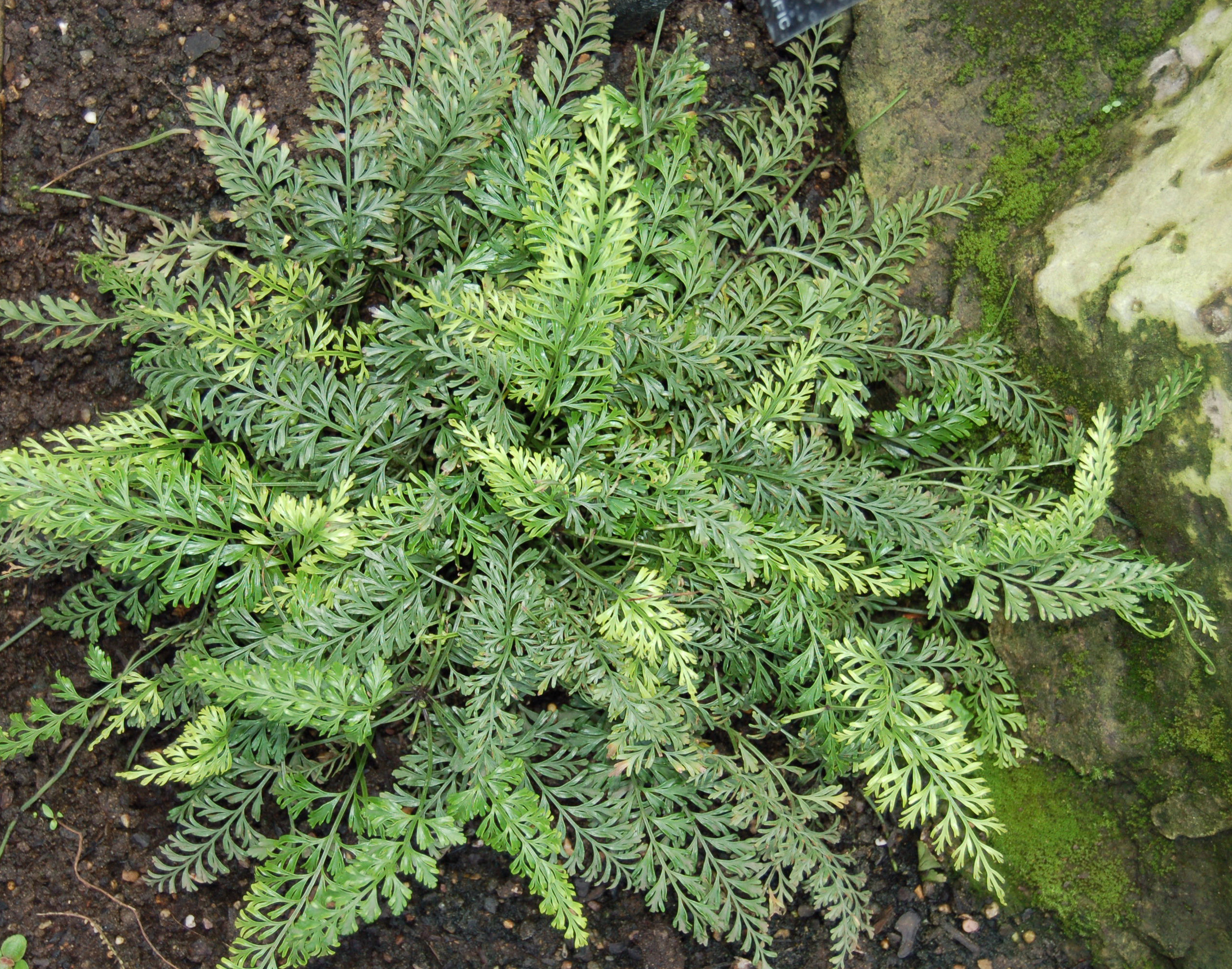Asplenium bulbiferum



 Asplenium bulbiferum, commonly known as the hen and chickens fern or māmaku (in Māori), is a species of fern in the family Aspleniaceae. This fern is native to New Zealand and parts of Australia, where it thrives in moist, shaded environments such as forests and gullies. It is notable for its unique reproductive strategy, which involves the production of bulbils on the upper surface of its fronds.
Asplenium bulbiferum, commonly known as the hen and chickens fern or māmaku (in Māori), is a species of fern in the family Aspleniaceae. This fern is native to New Zealand and parts of Australia, where it thrives in moist, shaded environments such as forests and gullies. It is notable for its unique reproductive strategy, which involves the production of bulbils on the upper surface of its fronds.
Description[edit]
Asplenium bulbiferum is a medium-sized fern that can grow up to 1 meter in height. Its fronds are bright green, soft, and have a distinctive arching shape. The fronds are bipinnate, meaning they are divided twice, with each division leading to smaller leaf segments. One of the most remarkable features of this fern is the presence of bulbils, which are small, bulb-like structures that form on the upper side of the fronds. These bulbils can develop into new plants when they fall to the ground, making Asplenium bulbiferum an efficient species at spreading and colonizing new areas.
Habitat and Distribution[edit]
Asplenium bulbiferum is primarily found in the forests and gullies of New Zealand, including both the North and South Islands. It prefers shaded, moist environments, often growing on the forest floor or on the trunks of trees as an epiphyte. In Australia, its presence is more limited, occurring in the cooler, wetter regions of the southeast, including Tasmania.
Reproduction[edit]
The reproduction of Asplenium bulbiferum involves both sexual and asexual methods. The sexual reproduction occurs via spores, which are produced in sori located on the underside of the fronds. These spores can be dispersed by wind, leading to the germination of new plants in suitable habitats. The asexual reproduction is facilitated by the bulbils. Once a bulbil falls to the ground and finds a moist environment, it can grow into a new fern. This method of reproduction allows for rapid colonization of suitable habitats.
Conservation[edit]
While Asplenium bulbiferum is not currently listed as endangered, its habitat is under threat from deforestation, land development, and the spread of invasive species. Conservation efforts are focused on preserving the natural habitats where this fern grows, as well as controlling invasive species that compete with it for resources.
Cultural Significance[edit]
In Māori culture, Asplenium bulbiferum is known as māmaku and has been used for various purposes. The young fronds, or fiddleheads, are edible and were traditionally eaten as a delicacy. The fern also holds a place in traditional medicine, where it was used to treat various ailments.
See Also[edit]
Ad. Transform your life with W8MD's Budget GLP-1 injections from $75


W8MD offers a medical weight loss program to lose weight in Philadelphia. Our physician-supervised medical weight loss provides:
- Weight loss injections in NYC (generic and brand names):
- Zepbound / Mounjaro, Wegovy / Ozempic, Saxenda
- Most insurances accepted or discounted self-pay rates. We will obtain insurance prior authorizations if needed.
- Generic GLP1 weight loss injections from $75 for the starting dose.
- Also offer prescription weight loss medications including Phentermine, Qsymia, Diethylpropion, Contrave etc.
NYC weight loss doctor appointmentsNYC weight loss doctor appointments
Start your NYC weight loss journey today at our NYC medical weight loss and Philadelphia medical weight loss clinics.
- Call 718-946-5500 to lose weight in NYC or for medical weight loss in Philadelphia 215-676-2334.
- Tags:NYC medical weight loss, Philadelphia lose weight Zepbound NYC, Budget GLP1 weight loss injections, Wegovy Philadelphia, Wegovy NYC, Philadelphia medical weight loss, Brookly weight loss and Wegovy NYC
|
WikiMD's Wellness Encyclopedia |
| Let Food Be Thy Medicine Medicine Thy Food - Hippocrates |
Medical Disclaimer: WikiMD is not a substitute for professional medical advice. The information on WikiMD is provided as an information resource only, may be incorrect, outdated or misleading, and is not to be used or relied on for any diagnostic or treatment purposes. Please consult your health care provider before making any healthcare decisions or for guidance about a specific medical condition. WikiMD expressly disclaims responsibility, and shall have no liability, for any damages, loss, injury, or liability whatsoever suffered as a result of your reliance on the information contained in this site. By visiting this site you agree to the foregoing terms and conditions, which may from time to time be changed or supplemented by WikiMD. If you do not agree to the foregoing terms and conditions, you should not enter or use this site. See full disclaimer.
Credits:Most images are courtesy of Wikimedia commons, and templates, categories Wikipedia, licensed under CC BY SA or similar.
Translate this page: - East Asian
中文,
日本,
한국어,
South Asian
हिन्दी,
தமிழ்,
తెలుగు,
Urdu,
ಕನ್ನಡ,
Southeast Asian
Indonesian,
Vietnamese,
Thai,
မြန်မာဘာသာ,
বাংলা
European
español,
Deutsch,
français,
Greek,
português do Brasil,
polski,
română,
русский,
Nederlands,
norsk,
svenska,
suomi,
Italian
Middle Eastern & African
عربى,
Turkish,
Persian,
Hebrew,
Afrikaans,
isiZulu,
Kiswahili,
Other
Bulgarian,
Hungarian,
Czech,
Swedish,
മലയാളം,
मराठी,
ਪੰਜਾਬੀ,
ગુજરાતી,
Portuguese,
Ukrainian
